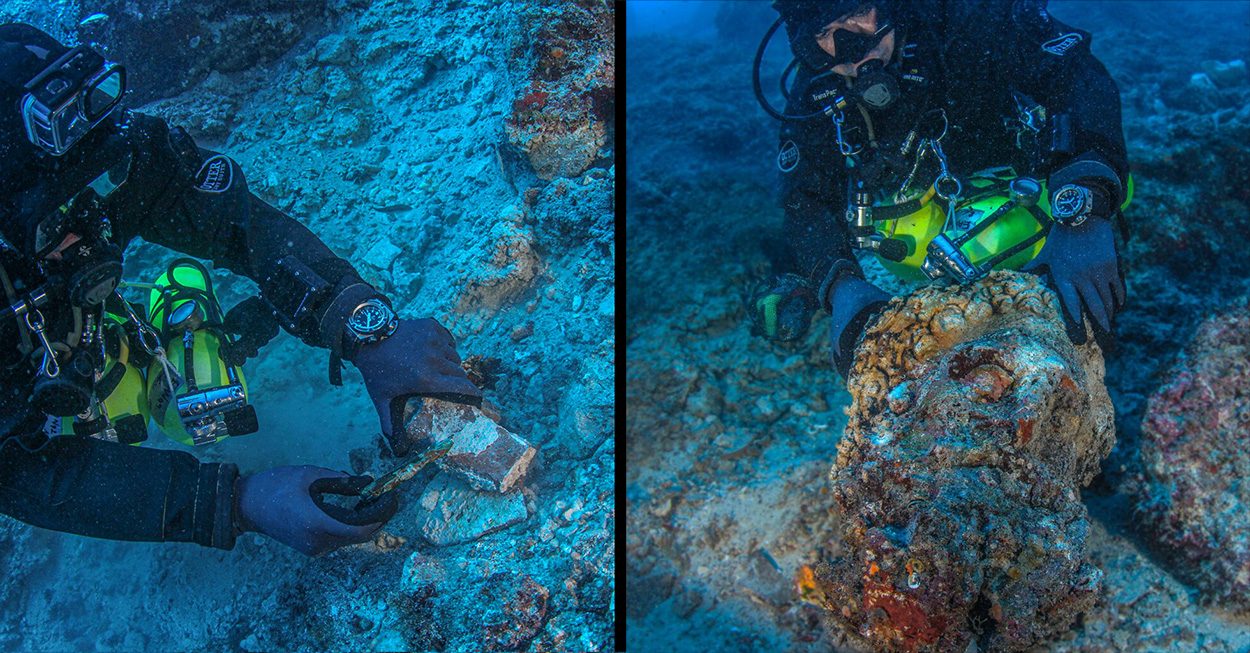Underwater archaeologists have made new discoveries in the famous Antikythera shipwreck. It became possible after removing several tons of rock from a previously inaccessible part of the wreck. Among the new finds are the head of a marble statue of Hercules, parts of a ship’s anchor, and a human tooth. The latter is especially interesting because the genetic material of ancient sailors can be extracted from them, providing information about their origin.
More than 2,000 years ago, one of the largest cargo ships of antiquity sank off the Greek island of Antikythera. The ship, 50 meters long, was loaded with luxury goods from Asia Minor intended for wealthy Romans. This shipwreck was discovered by sponge divers in 1900. In the years since, divers have unearthed many ancient finds, including silverware, ceramics, glassware, and bronze and marble statues depicting Roman deities and ancient mythical figures. However, the most famous and famous is the Antikythera Mechanism, an intricate bronze instrument that can represent planetary constellations and celestial events.
Rocks, pedestal and head of Hercules
But the Antikythera wreck has yet to be fully explored. This is one of the reasons why underwater archaeologists have been carrying out new dives in the wreck on behalf of the Greek archaeological authorities for several years as part of the “Return to Antikythera” project. The goal is to gain more knowledge about the ship, its cargo and the conditions of its sinking. From May 23 to June 15, 2022, the latest dives were conducted in search of the wreck. Divers initially used special belts and balloons filled with compressed air to remove several boulders weighing up to 8.5 tons that previously covered part of the shipwreck.
As a result, underwater archaeologists led by Alexandros Sotirio of the University of Geneva were able to examine previously inaccessible parts of the Antikythera wreck for the first time – and make more ancient discoveries. Below it is a marble statue base with lower legs for a figure. Divers also found the larger than life marble head of a bearded man. Archaeologists conclude from the design of the facial features that it is a representation of the so-called Varna-type Hercules. According to them, this may be the missing head of a decapitated figure of the so-called “Heracles Antikythera” that was discovered in the wreck in 1900.
Dental results can provide information about the staff
Of particular interest are human teeth discovered by divers in a solid conglomerate of marine sediment, copper shards, wood scraps and other materials. So far, hardly any traces of the former crew have been found in the wreck, only in 2016 archaeologists managed to save an incomplete skeleton. It is still not clear whether the two teeth that were found belonged to this skeleton or to someone else. However, the researchers hope to obtain more information about its former carrier through genetic and isotopic analyzes of the teeth. Because straight teeth can preserve such information over a long period of time.
In addition, pieces of ancient marine equipment have also been found in the Antikythera wreck, including several bronze and iron nails, lead casing of a wooden anchor, and several amorphous iron conglomerates that require further study. X-ray analyzes will be used to determine what is hidden in these structures, the team explains. All finds, their location and exposed debris at the site were documented and digitally recorded. It will then be incorporated into a 3D model of the shipwreck that is currently being developed. The finds from the wreck were transferred to special laboratories of the Hellenic Underwater Archeology Authority for further analysis.
Source: Back to the Antikythera Project

“Alcohol buff. Troublemaker. Introvert. Student. Social media lover. Web ninja. Bacon fan. Reader.”






More Stories
Ecologists Celebrate New Xesap National Park in Laos | Science
Is the wrong diet making you forget?
We can study it with a new telescope.